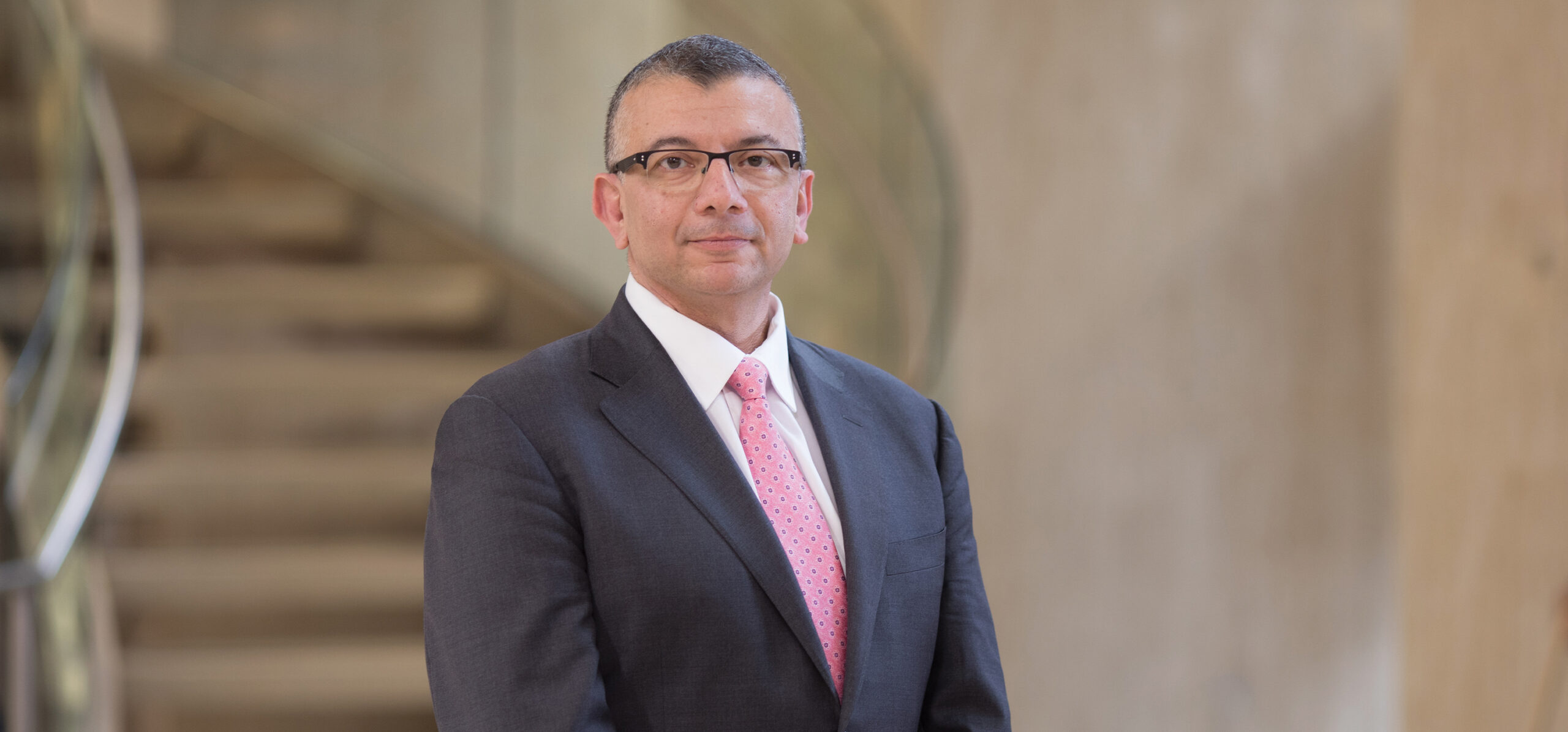
Emad Eskandar, M.D., M.B.A., is the chair of neurological surgery at Einstein and Montefiore and a professor in the Leo M. Davidoff Department of Neurological Surgery, the department of psychiatry and behavioral sciences, and the Dominick P. Purpura Department of Neuroscience at Einstein. He also holds the Jeffrey P. Bergstein Chair and the David B. Keidan Chair in Neurological Surgery. Dr. Eskandar was born in Egypt and raised in Omaha, Nebraska; he joined the faculty in 2018.
How old were you when you came to the United States?
I was just 9 and felt like a fish out of water—I didn’t speak any English and looked different. Adjusting to life here wasn’t straightforward, but somehow my parents, my sister, and I figured it out. We didn’t have our extended family close by, but that was true for many Americans. That absence can mean that people are isolated and don’t always have someone to turn to—a stark social reality highlighted by the pandemic.
What has your pandemic experience been like?
It has been hard for our department. One of our most illustrious members, Jim Goodrich—well known for his work separating conjoined twins—contracted the coronavirus and died at the beginning of the pandemic. He was a great man, a great mentor.
Has your clinical staff worked on the COVID-19 wards at Montefiore, like many other noninfectious disease specialists?
Neurosurgical emergencies don’t stop because of a pandemic. We’ve been kept busy taking care of patients with brain tumors, strokes, and other serious issues, but also have been frequently asked to consult on COVID-19 patients with neurological complications. In a study of nearly 5,000 patients hospitalized with the coronavirus, we’ve found that those with stroke and altered mental status have a higher mortality rate. We also developed a model, based on six risk factors and biomarkers, for predicting which COVID-19 patients face a higher risk for severe illness or death. Both of those findings could help focus treatment on the most-vulnerable patients and potentially save lives.
Since becoming department chair, you’ve established several centers, including the Center for Surgical Optimization within the Spine Center. What does it do?
It’s fundamentally a research enterprise for optimizing all the decision-making that goes into complex cases, with the goal of improving efficiency and outcomes. Serious back pain, for example, affects about 90% of people at some point in their lives and is a major cause of disability and loss of work. Not everyone needs surgery for back pain, but for those who do, we need to offer them the best and most cost-effective care possible.
Was the creation of the Spine Center influenced by your training in business administration?
Some people joked that I went over to the “dark side” when I got my M.B.A., but getting that degree wasn’t about making money. It’s just one more skill for dealing with complex systems and running a large academic and clinical department.
What are the latest trends in neurological surgery?
We’ve seen rapid development of endovascular procedures—threading devices into the brain via arteries lower in the body—as alternatives to major brain surgery. Those devices are used to remove blood clots that can cause strokes or to clip aneurysms [bulges in arteries] to prevent leakage or rupture. It may also be possible to use endovascular procedures to treat severe migraines and subdural hematomas, where blood builds up between the skull and the surface of the brain—a common problem in older people.
What are your basic-research priorities?
Our focus on the brain circuits underlying learning could lead to several clinical applications. We’ve identified a technique for enhancing learning through deep brain electrical stimulation and have successfully tested it in epilepsy patients implanted with brain electrodes to determine where in the brain their seizures were occurring. This technique could be used to enhance learning and help solve memory issues caused by stroke, traumatic brain injury, or Alzheimer’s disease.
In addition, those same brain circuits are involved in addiction. Addictive substances rewire brain circuits, biasing behavior toward pursuing rewarding stimuli to the exclusion of almost everything else. The pandemic has given me time to create an artificial-intelligence model of reinforcement learning, which will help us figure out ways to use deep brain stimulation to blunt or negate these abnormal circuits.
A third focus of my research is developing maser technology for monitoring and modulating brain activity.
What does “maser” mean?
Maser stands for microwave amplification by stimulated emission of radiation—nearly the same as “laser” but using focused beams of microwaves instead of light waves.
What’s the advantage in using masers over lasers?
From a clinical standpoint, masers can pass right through the skull, which lasers cannot do. This potentially means we can use focused maser energy to change ion channels, receptors, and other molecules in the brain and modulate nerve activity as well. It’s an exciting prospect, but it’s probably going to take decades to develop.
You’ve traveled widely for work. Any favorite places?
Basically, I enjoy any place where I can have a cultural experience. I find beaches boring. I prefer more-extreme places, with mountains and glaciers. I especially loved Iceland.